Stem Cell Therapy in United States
Search and Compare the Best Clinics and Doctors at the Lowest Prices for Stem Cell Therapy in United States
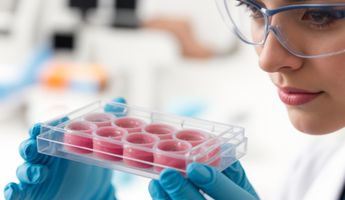
Find the best clinics for Stem Cell Therapy in United States
No pricing info available
Malaysia offers the best prices Worldwide
Price: $ 530
From 136 verified reviews
Yesenia Ortiz, 22 September 2020
Excellent service and expertise. Dr. Goldberg was thorough and supportive with my treatment options and decision.
From 57 verified reviews
Joseph Young, 18 April 2020
This was my second appointment at the Clinic and I could not been any happier I have a schedule for surgery and I’m so excited after year and a half looking and trying to find a doctor like Dr Bomd M.D nothing better than having a light at the end of the tunnel I cannot wait to get my hip repaired 💯% Thanks for taking the time to read this Joseph Young
Maxim hair Restoration, can be found in North Dallas, Dallas, United States and offers its patients Stem Cell Therapy procedures as well as 24 other procedures, across 3 different procedure categories. At present, there is no pricing information for Stem Cell Therapy procedures at Maxim hair Restoration. The pricing information is quite specialised, so it's only available on request. Currently, there's no information available about the doctors at the Clinic, and Maxim hair Restoration is not accredited by any recognised accreditations institutions.
- Home
- United States
Compare Before & After Photos of _procedure_photos.phpStem Cell Therapy
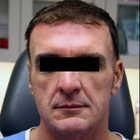
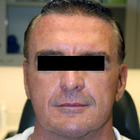
Front view


Front view
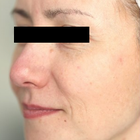
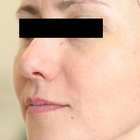
Half-side view
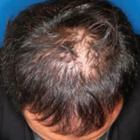
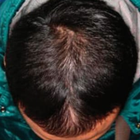
Front view
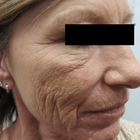
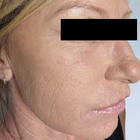
Half-side view
WHY US?
At Medijump, we're making medical easy. You can search, compare, discuss, and book your medical all in one place. We open the door to the best medical providers worldwide, saving you time and energy along the way, and it's all for FREE, no hidden fees, and no price markups guaranteed. So what are you waiting for?

Free

Best Price

Widest Selection

Risk-Free
What you need to know about Stem Cell Therapy in United States

Stem Cell Therapy involves the use of stem cells to treat different diseases. These are non-differentiated cells of a multicellular organism. All the cells in the body are specialized for a specific function but they are the only cells without an assigned function. They can differentiate into any type of cell as and when required by the body and can proliferate rapidly to produce multiple copies of a specific type. Sources of stem cells are embryos and adult body tissues. In the adults, stem cells are present in bone marrow, brain, liver, skin, skeletal muscles, blood and blood vessels. While embryonic stem cells are derived from a blastocyst. Nowadays, the Umbilical cord is being stored under suitable conditions to get stem cells from it if needed. This is useful as chances of transplant rejection are less because stem cells are derived from your own umbilical cord.
Bone Marrow Transplant is the most commonly used method to treat various types of cancers such as lymphoma, multiple myeloma, and leukemia, etc. through stem cells. It is also used to treat brain diseases, cardiovascular diseases and cell deficiencies such as diabetes mellitus. Recently, anti-aging stem cell treatments have gain fame. It is used to restore your youth and beauty.
What is the cost of Stem Cell Therapy in United States?
The price of stem cell therapy, also known as Stem Cell Therapy, can fluctuate greatly based on factors like the intricacy and specifics of the procedure, the particular health issue being addressed, and the geographic site of the therapy center or clinic. When compared to conventional therapies, stem cell therapy's cost tends to be rather steep.
Yet, when considering the prospective benefits and potential long-term economic advantages, an increasing number of patients are choosing this therapeutic approach. It's crucial to mention that, although certain health insurance firms may cover the expenses of stem cell therapy for specific situations, a number of them do not due to the considerate speculative aspect of the therapy.
What does a Stem Cell Therapy Procedure Involve?
The procedure of stem cell therapy starts with removing stem cells from your body or from the donor’s body. The cells are collected from different body parts depending upon the need. After collection, the cells are processed according to the purpose for which they are extracted. The processed stem cells are injected into the specific area of your body using ultrasound or X-ray guidance. Anesthetics are used and the procedure is done under sterile conditions. It is necessary to make sure that the cells are reaching the desired area so that the improvement is better and quicker. There are three types of stem cell transplant:
- Autologous transplant - your own body stem cells are removed and used. This type of transplant is safer and recovery is quicker because chances of transplant rejection are less as your own stem cells are being used.
- Allogenic transplant - stem cells are obtained from a suitable donor. Matching is done to find a donor whose white cell antigen closely resembles yours. The donor can or cannot be your relative.
- Syngeneic transplant - stem cells from your identical twin are used. In this case, the chances of rejection are low.
Each type of stem cell transplant involves different methods, procedures, and techniques with different side effects and risks. The one suitable for you depends upon your age, health, and physical conditions.
How Long Should I Stay in United States for a Stem Cell Therapy Procedure?
The length of stay in the hospital varies in accordance with the condition for which stem cell therapy is being done. It is usually a 3 to 4 hours procedure (in-patient) in which stem cells are introduced into the body using syringes or catheters. Different factors are considered to decide the length of your stay in the hospital. These factors are:
- You are not suffering from a fever for the last 24 to 48 hours.
- You have a safe blood cell count.
- You are able to eat and drink.
- Your symptoms such as nausea, vomiting, and diarrhea are under control.
- You have someone with you to look after you.
Your stay in the hospital is longer for an allogeneic transplant as compared to an autologous transplant and you're free to leave United States the very next day, although it's advised to stay at least a few days in case you have further questions for the medical staff. But of course, these can be asked over the phone/email or directed towards your local medical team back home.
What's the Recovery Time for Stem Cell Therapy Procedures in United States?
Complete recovery time varies from 2 to 12 weeks when the patient begins to feel pain relief. However, you can return to your routine work a couple of days after going through the transplant. Recovery depends upon your physical condition before and after the transplant. Over a period of 6 to 12 months, further improvements are seen in the patients. During the process, antibiotics and other drugs are prescribed. These drugs prevent transplant rejection and graft-host diseases. Allogenic stem cell transplant takes longer to recover than an autologous transplant.
What sort of Aftercare is Required for Stem Cell Therapy Procedures in United States?
It is advised to keep in contact with your doctor and to visit them on a regular basis. Apart from this, the following points should be considered:
- Minor pain will be present after going through the therapy - icepacks are effective in this regard. Pain might either be because of inflammation or muscle spasm. Inflammation is common due to your immune system activity. Anti-inflammatory medicines are avoided in the initial period because they can interfere with the healing process.
- Walking is good for your health. Rest is not always the best option for quick recovery. Blood flow and oxygen is needed by the treated area which is provided by light activity and movement.
- Ask your doctor about your nutritional requirements and eat healthy according to it.
- Do some joint stabilizing exercises to aid the healing process.
What's the Success Rate of Stem Cell Therapy Procedures in United States?
Stem cell therapy's effectiveness, also known as Stem Cell Therapy, can change based on the illness, the age and health of the patient, and the type of therapy used. Although new, stem cell therapy has shown promise in areas like bone, brain, and heart health, it is not always successful due to various reasons, one being the transplant rejection. It is an excellent idea to talk about the possible good and bad outcomes with your doctor before making a choice.
Are there Alternatives to Stem Cell Therapy Procedures in United States?
Exosomes are being used as an alternative to stem cell therapy. They are lipid bilayer surrounded vesicles secreted by live cells. They contain mRNA, proteins, chaperons, and various signaling molecules. They work as a natural carrier system for the transport of these substances. They function as a messenger within the body carrying information from one cell to the other. Stem cell therapy can be enhanced using exosomes. They help the body’s natural healing ability to increase the pace of recovery. Sometimes, stem cell therapy and exosomes are given together for better results.
What Should You Expect Before and After the Procedure
Before you proceed with the Stem Cell Therapy, it's typical to have a meeting with your medical professional to examine your unique situation, the potential advantages and drawbacks of the process, and your overall wellness. This discussion will help determine if stem cell therapy is suitable for you. Comprehensive diagnostic evaluations may be necessary to fully examine your health status. The medical professional will guide you through the procedure, describing how the treatment is carried out, what it involves, and what to anticipate. The significance of regular physical activity and keeping a balanced lifestyle before the procedure to boost the effectiveness of the treatment shouldn't be overlooked.
Following the completion of the Stem Cell Therapy, you might feel a slight discomfort, redness, or swelling at the injection site, which typically subsides within a few days. Keep in mind that the recovery process post-procedure may take several weeks or months, as the reinstated stem cells function to fix and reconstruct the damaged tissues. Therefore, a degree of patience may be necessary before noticing the advantages of the treatment. Regular follow-up appointments with your medical professional to monitor your body's reaction to the treatment, assess progress, and control any possible side effects, are necessary. Reinforcing healthy habits such as a balanced diet, frequent physical activity, sufficient sleep, and stress control are crucial components of the post-procedure care.
What are Potential Risks of Stem Cell Therapy?
As with any medical intervention, Stem Cell Therapy is not devoid of risk. However, given that the patients' own cells are generally used, the chance of rejection or allergy is quite low. Possible complications may encompass infection, hemorrhage, or an adverse response to the anesthesia utilized during the operation. Moreover, while stem cells possess the extraordinary capacity to transform into various cell types in the body, there is a possibility they could proliferate without control, leading to the formation of tumors. Nevertheless, such instances are incredibly infrequent and are chiefly linked with embryonic stem cells, rather than the adult stem cells usually employed in the majority of Stem Cell Therapy procedures.
What are the Long-Term Effects of Stem Cell Therapy?
The enduring impacts of stem cell treatment, a fairly recent medical specialty, continue to be probed by scientific research. Nevertheless, some scholarly investigations propose that such a treatment method could offer a sustainable easing of symptoms and potentially decelerate the advancement of particular ailments. The influence of this therapeutic approach differs significantly among individuals and is significantly dependent on factors such as a person's comprehensive health status, the kind and gravity of the disease under treatment, and the specific treatment regimen pursued.
Whilst the information presented here has been accurately sourced and verified by a medical professional for its accuracy, it is still advised to consult with your doctor before pursuing a medical treatment at one of the listed medical providers
No Time?
Tell us what you're looking for and we'll reachout to the top clinics all at once
Enquire Now

Popular Procedures in United States
Prices Start From $273

Prices Start From $2,000

Prices Start From $126

Recommended Medical Centers in United States for Stem Cell Therapy

- Interpreter services
- Translation service
- Religious facilities
- Medical records transfer
- Medical travel insurance
- Health insurance coordination
- TV in the room
- Safe in the room
- Phone in the room
- Private rooms for patients available

- Interpreter services
- Translation service
- Religious facilities
- Medical records transfer
- Medical travel insurance
- Health insurance coordination
- TV in the room
- Safe in the room
- Phone in the room
- Private rooms for patients available

- Interpreter services
- Translation service
- Religious facilities
- Medical records transfer
- Medical travel insurance
- Health insurance coordination
- TV in the room
- Safe in the room
- Phone in the room
- Private rooms for patients available

- Interpreter services
- Translation service
- Religious facilities
- Medical records transfer
- Medical travel insurance
- Health insurance coordination
- TV in the room
- Safe in the room
- Phone in the room
- Private rooms for patients available

- Interpreter services
- Translation service
- Religious facilities
- Medical records transfer
- Medical travel insurance
- Health insurance coordination
- TV in the room
- Safe in the room
- Phone in the room
- Private rooms for patients available
Stem Cell Therapy in and around United States
About the United States
With a population of over 327 million people, the United States of America (USA) is the third most populous country in the world. It has endless options for visitors with beaches, snow-covered mountains, forests, big cities; travelers will have many different experiences. The country is also a top global destination for medical travel. Although procedures can cost a lot more when compared to Asian countries, people from all over the world come to the United States to get treated with advanced technology and competent medical professionals. The skilled and experienced doctors are mostly trained in world-renowned universities including Stanford and Harvard. Medical tourists come from the Caribbean, Europe, and Central America and almost any procedure can be done in the country, whether it is complex procedures or a difficult diagnosis.
Popular Parts of the United States
- New York City is home to various iconic landmarks. Tourists will find world-famous sites around every corner and there are just so many things that tourists should not miss, such as the Statue of Liberty, Times Square, the Staten Island Ferry, Empire State Building, the Brooklyn Bridge, and MoMA. Art is an essential part of the city and museums devoted to every type of art is available from Japanese sculpture, medieval European treasures, to Himalayan textiles. The city is also known to have an incredible food scene. Tourists are welcome to dine at one of the city’s 74 Michelin-starred restaurants or try the food trucks. At night, the city comes alive with the legendary theater of Broadway, burlesque performance, ballet, music, and so many more.
- Los Angeles is home to Hollywood, natural beauty, and architecture. It is filled with movie stars, musicians, and surfers. Tourist who loves film will be delighted to tour TCL Chinese Theatre, the Hollywood Walk of Fame, the Paramount Picture Studios. Most tourists will enjoy relaxing in Venice Beach, Zuma Beach, and the Santa Monica Pier and Beach. Tourists can also take a day trip to the “Happiest Place on Earth,” Disneyland-Anaheim, wander around Griffith Park, or see the beautiful Getty Museum.
- Dallas is a cosmopolitan city that is overflowing with culture and pride. The city is famous for Cowboys, cheerleaders, and unique attractions. Museums are probably the best points of interest in the city, including the Sixth Floor Museum and Perot Museum of Nature & Science. Tourists also have many options to hang out in since the city is filled with trendy restaurants, boutiques, and cafes. If you want to see some beautiful flowers, visit the Dallas Arboretum. It is a beautiful botanical garden that showcases plants and flowers in themed gardens.
- Chicago is a city of many things. Whether you want to visit jazz clubs, fine dining, admire its skyscrapers, or go shopping, you will find something to do in this city. Some of the top attractions are Hancock Observatory, Shedd Aquarium, Millennium Park, and Lincoln Park Conservatory and Zoo. Everywhere you walk, you will find astonishing art and architecture, such as an abstract Picasso statue and the Museum of Mexican Art.
Weather and Climate in the United States
The United States has a wide variety of climates, which makes it a year-round destination. In general, the country experiences four distinct seasons. Summer starts in June and ends in August. During the summer, the northern states enjoy warm days and cool nights, and the southern states and tropical areas experience very hot temperatures. Autumn is from September to November and the season brings cooler temperatures to the country. December to February is the winter months and the northern areas will encounter snow and colder temperatures, but the southern areas experience mild temperatures. The temperatures all around the country will begin to warm up during the spring months from March to May and expect to find many thunderstorms and rainstorms during this season.
Getting Around in the United States
The United States is well connected by plane since it has more than 375 domestic airports and numerous international airports. Most tourists will arrive in Hartsfield-Jackson Atlanta, John F. Kennedy International Airport, or O’Hare International Airport. These airports serve domestic and international flights to many parts of the world. The airports also operate many carriers such as Delta Air Lines, JetBlue, United, and American Airlines.
The most affordable way to get around the USA is by bus. Many bus companies go across the country such as Greyhound, Mega Bus, Peter Pan, and Bolt Bus. However, it is important to note that long-distance travel can take a long time. The nicer option to travel around the country is by Amtrak trains. It is by no means fast, but tourists can relax and enjoy the landscape. If you wish to travel by train, tourists can purchase money-saving passes. The most popular way to travel around the USA is by car. Petrol is generally cheaper compared to the United Kingdom and it gives tourists the freedom to go wherever they want. Taxis are plentiful in most cities and can be very inexpensive. Many taxis are painted in bright yellow, making them easy to distinguish. Taxi can be hailed directly from the streets and the fare is run on a meter.
Tourist Visas in the United States
All visitors must obtain a visa to visit the United States of America unless they come from one of the visa-exempt or Visa Waiver Program countries. There are four countries and Bermuda that have visa exemption access to the US. Currently, citizens of 38 countries are selected for the Visa Waiver Program, including Australia, Japan, Singapore, and the United Kingdom. Other nationals not listed in the visa-exempt or Visa Waiver Program should apply and obtain a visa before entering the country. It is advisable to always check with your nearest US Embassy for the visa policy.
Additional Information
- Local Currency: The official currency is the US dollar ($). It is known as a ‘global currency.’ Check XE.com for the current exchange rate to your local currency.
- Money & Payments: ATMs are available almost everywhere around the country. Major credit and debit cards are universally accepted in restaurants, hotels, shops. Credit cards are required to book domestic flights. Tipping is not optional, so make sure to always leave some tips.
- Local Language: The main language in the country is American English. Many people will be able to speak Spanish.
- Local Culture and Religion: The USA is home to many religions and most of the population follows Christianity, but there are small groups of Jews and Muslims.
- Public Holidays: Some of the most celebrated holidays in the USA are New Year’s Day, Independence Day, US Indigenous People’s Day, Thanksgiving, and Christmas Day.
Popular Searches
- Plastic Surgery in Thailand
- Dental Implants in Thailand
- Hair Transplant in Thailand
- Breast Augmentation Thailand
- Gastric Sleeve in Thailand
- Gender Reassignment Surgery in Thailand
- Laser Hair Removal in Bangkok
- Botox in Bangkok
- Dermatology in Bangkok
- Breast Augmentation in Bangkok
- Coolsculpting in Bangkok
- Veneers in Turkey
- Hair Transplant in Turkey
- Rhinoplasty in Turkey
- Stem Cell Therapy in Mexico
- Rhinoplasty in Mexico
- Liposuction in Mexico
- Coolsculpting in Tijuana
- Rhinoplasty in Korea
- Scar Removal in Korea
- Gastric Sleeve in Turkey
- Bone Marrow Transplant in India
- Invisalign in Malaysia
- Plastic Surgery in the Dominican Republic
- Tummy Tuck in the Dominican Republic
- Plastic and Cosmetic Surgery in Poland
- Rhinoplasty in Poland
- Hair Implant in Poland
- Dental Implants in Poland
- IVF in Turkey


